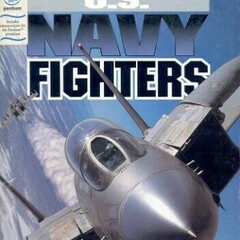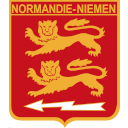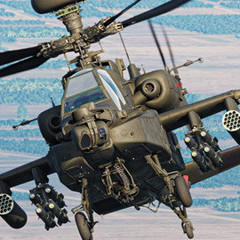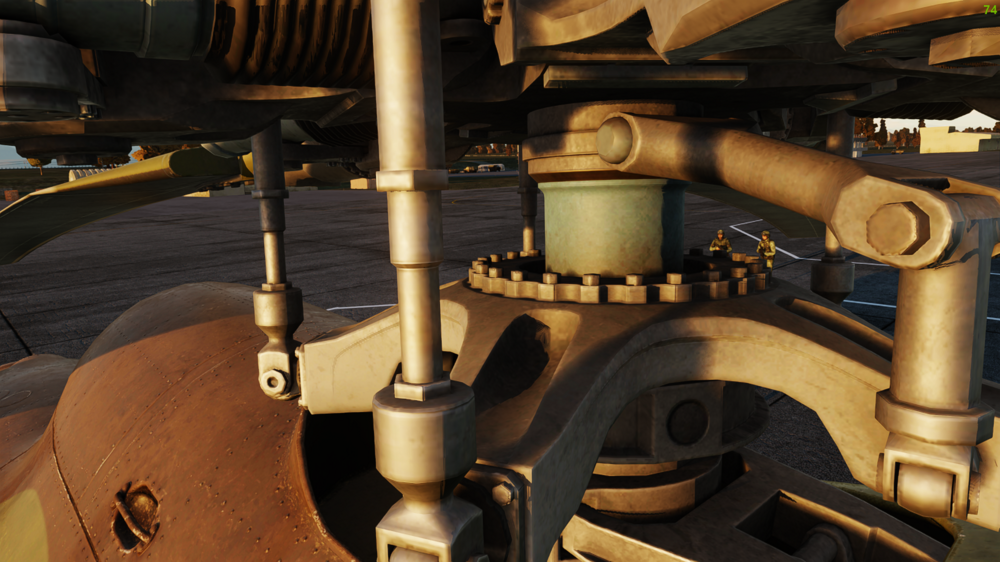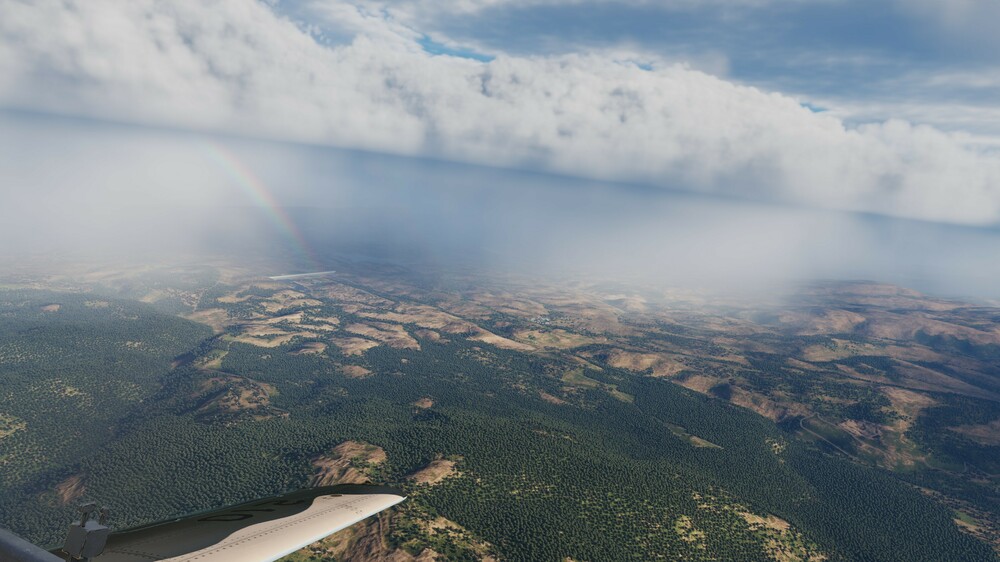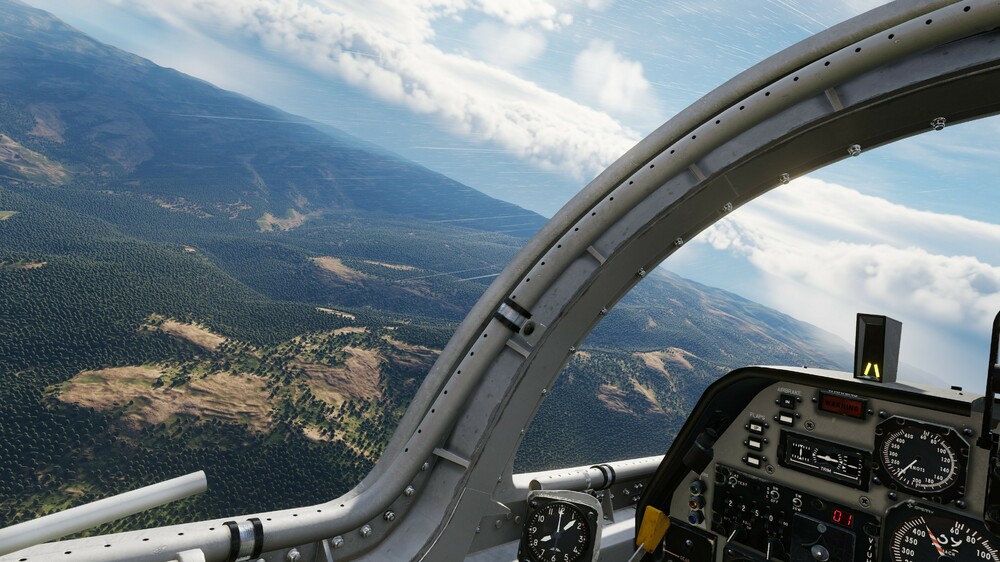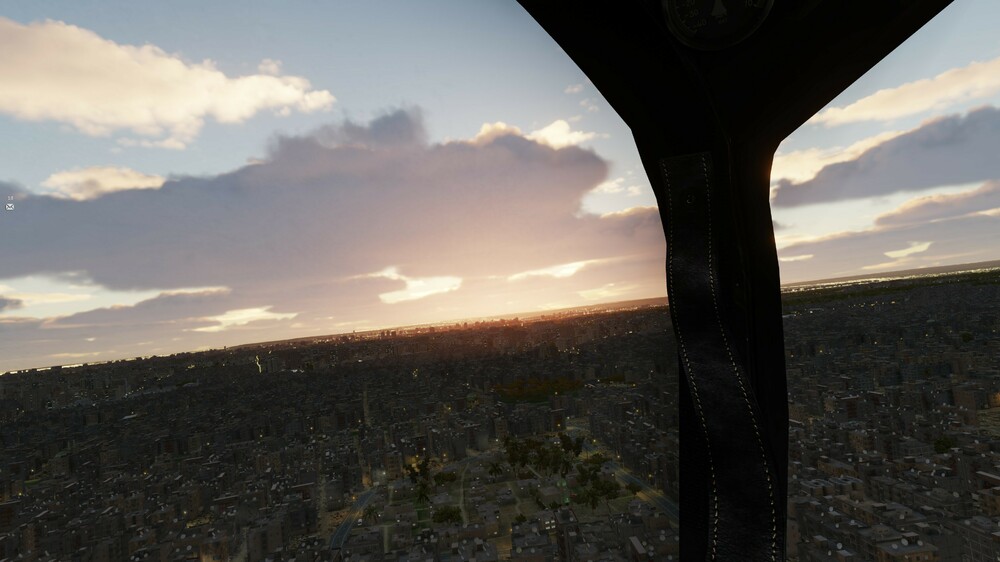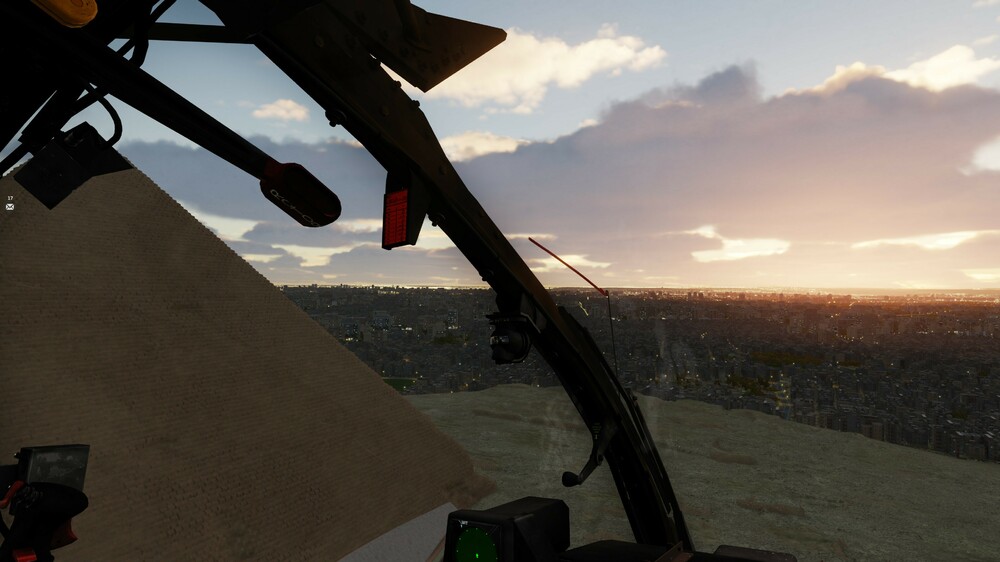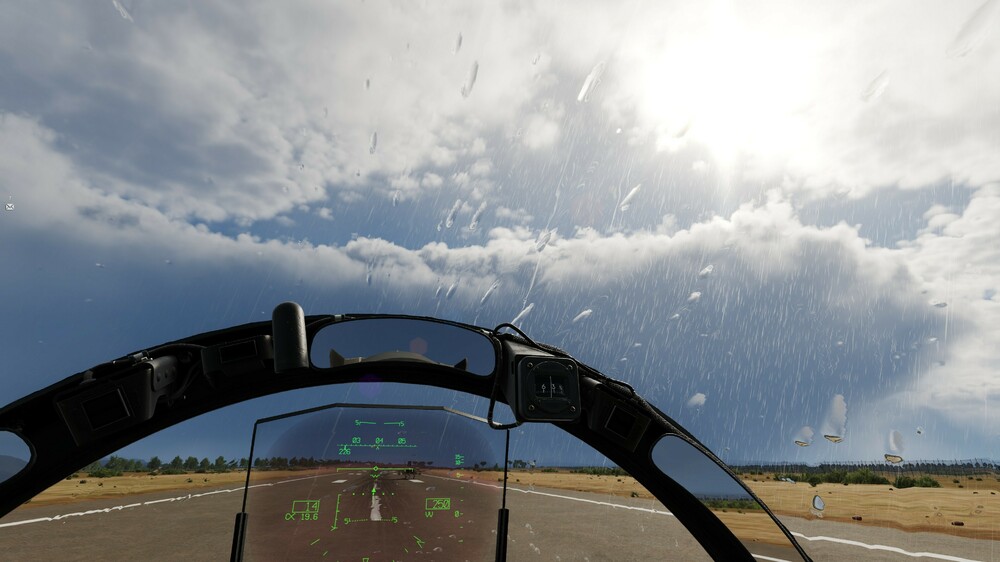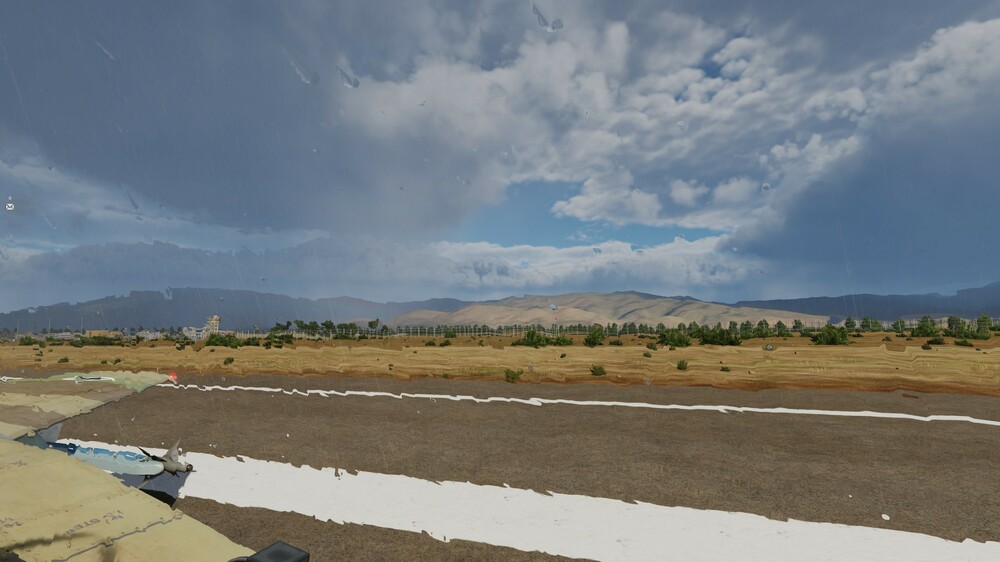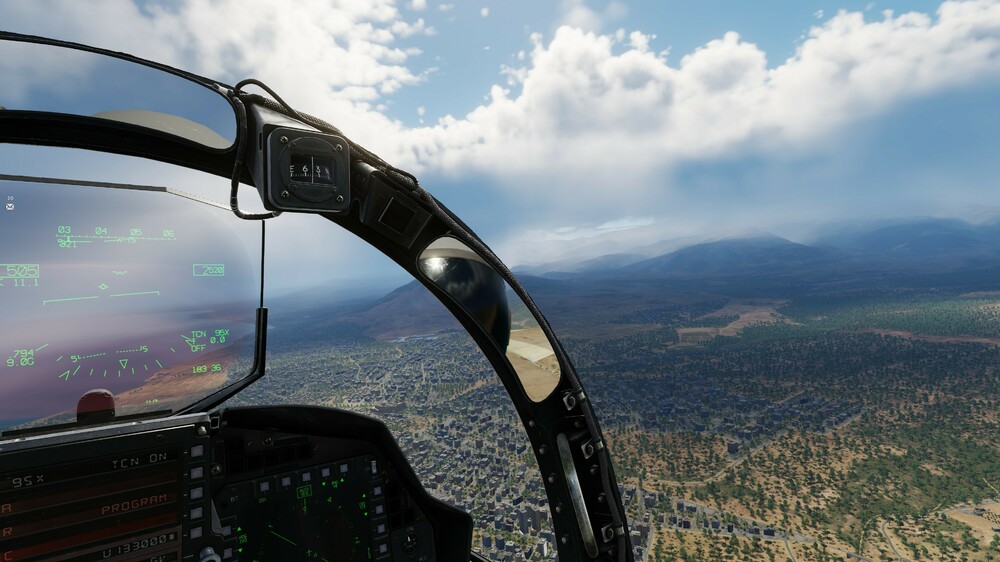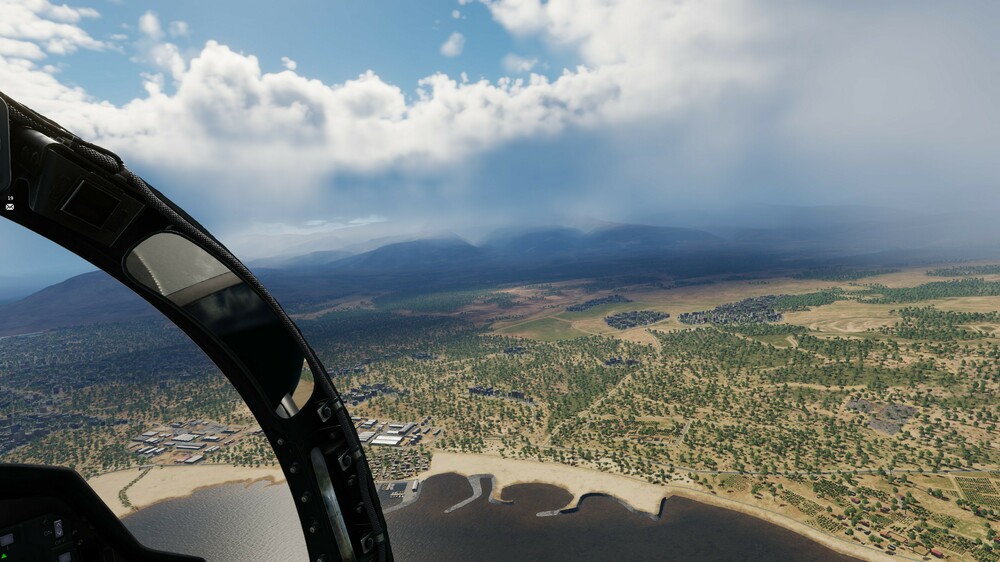Leaderboard
Popular Content
Showing content with the highest reputation on 10/25/23 in all areas
-
Good morning fellow pilots, and welcome to Viggen.training! With this thread I am opening a new era of pilot training for our beloved "AJS37 Viggen" module. The thread gives you a rough outline of the project, which I am proudly presenting to you! What is it? Viggen.training is the first public pilot type-training platform for the AJS37 Viggen for DCS. The training is designed open, so that you can start at any time, and only complete the content that you really need. It is not a requirement to start from scratch. On the other hand, if you are new to the AJS37 Viggen, you may find it useful to start over with this sophisticated training. The syllabus The basis for Viggen.training is the ATIS 37 manual, a document used by the Swedish Air Force. This manual contains the whole training syllabus (all relevant learning objectives and required training flights and check-flights) for the Viggen. The syllabus is divided into 3 stages/phases (Swedish "skede"): "Skede 1" "Skede 2" "Skede 3" In order to make this work using a computer game simulation like DCS, the syllabus had to be modified in one way or another. Viggen.training will initially cover “Skede 1”, which focuses on: Flight training ("flygutbildning" - FLY) Theoretical knowledge training ("teknik" - TEK) What is waiting for you? Homepage The homepage www.viggen.training is your “home-base” and offers a collection of services. You can, e.g. create your own user profile. The user profile is your "life record" and also contains a "flight log". The homepage also hosts the "Eternal list of the best" (for the best of the best). You may visit the training office and the flight line, and maintain your user data and user settings. Training Office You can enter the "training office", which hosts a lot of information for you: You can read about: The theoretical knowledge training The theoretical knowledge examinations The current theoretical knowledge training syllabus (2023) You can download a variety of training material You can browse the collection of relevant training videos Flight line You can enter the "flight line", which currently hosts 3 different types of missions/flights: Quick missions Training flights Proficiency-check flights QUICK MISSIONS These are intended to bridge the gap until the entire training syllabus becomes finished (yes, it is work in progress). You may use the quick missions in a sense of "recurrent training", so that you can quickly become "current" again after a long absence from flying the Viggen. Another approach could be to see them as "unguided type training", where you "learn by doing" on your own. Currently, 69 missions are available, covering the most important topics. TRAINING FLIGHTS These are: "Simulator flights" guided by an instructor (SUL) "Real flights" guided by an instructor in the double seater (Dubbelkommando - DK) "Real flights" without instructor in the single seater (Enkelkommando - EK) All flights are made for DCS, you just have to click the take-off button, download the miz. file and then fly it. If you want to log this flight, you must enter the flight code into the CK37, and your flight time and your success rates then become logged; finally, once you have finished your flight, you just have to upload the .LOG file created on your Windows Desktop folder. This list also contains all necessary self-study lessons (KLASS), they are in between the flights. Each entry provides the name of the lesson, a detailed description including: Topics Theoretical knowledge requirements and references to training material Lesson type A detailed briefing PROFICIENCY CHECK FLIGHTS These flights seriously test your skills in certain phases of the training; the success of these flights is relevant for your "life record" and for the "eternal list of the best". They test if you fly the aircraft safely, and in a sense of the specific requirements of the flight. The home-base is Kobuleti (in Caucasus region), which hosts a real airspace environment. And yes, your performances will be rated in depth, so be prepared! At least one proficiency check flight will be available very soon. Further missions might become available in the near future, but these are highly dependent on user acceptance of the whole project. These services are free! ASSESSMENT CENTER There are even more services waiting for you in the Assessment Center: Preparation courses AJS37 Viggen Manual RC2.1 (page per page, with progress bar) A1 / B1 Exam Preparation Course (hints for questions, and all necessary RC2.1 pages to study) B4 Exam Preparation Course (hints for questions, and all necessary RC2.1 pages to study) All training material and all preparation courses are free! ATPL training material If you have no experience with flight instruments and basic navigation at all, you may study ATPL training material, which is available in the form of e-learning courses; these are used in the real FCL pilot training environment worldwide. Currently available courses are: Instruments / 02 Measurement of air-data parameters (Part 1 - Part 3) Instruments / 03 Magnetism Instruments / 04 Gyro Instruments / 05 Inertial navigation General navigation / 01 Basic navigation On user request, further chapters of FCL content might become available very quickly. All ATPL courses are paid content, they can be bought at any time. Pre-entry checks You can take “pre-entry checks”; these serve as proof for being fit for the examinations. All pre-entry checks are free! Examinations You can take "examinations"; these are question banks regarding all technical and procedural aspects of the Viggen. For accomplished examinations, you will receive a dedicated certificate. This is the real stuff, and of course a real challenge. All examinations are paid content, they can be bought at any time. A word about the history of the project: This project was created in spring 2022; it is officially supported by Heatblur Simulations and Eagle Dynamics. Two people are currently working on the project in the foreground and a few more people support it in the background. The return of paid services is solely used to keep up the project (assessment center, homepage, domain, programming, etc.). Note: The introductory price for all paid services is reduced, so take advantage of this opportunity now! Thanks I would like to thank @Groove from Eagle Dynamics and @IronMike from Heatblur Simulations for giving their official "thumbsup". I would give A BIG THANK YOU to Eagle Dynamics for creating DCS world and Heatblur Simulations for making such a wonderful module! Guys, if you have questions and feedback, please use this topic. You are definitely invited to become a member of the Viggen Pilots squad, so join now! And as of now, we are keeping scores ... Yours sincerely, TOViper13 points
-
First of all a BIG THANK YOU to @TOViper from all of us at Heatblur Simulations! Viper has not only created a great, structured training program to support the Viggen module and its pilots, but also supported the DCS: AJS-37 Viggen over the years with great input and feedback, culminating in curating the updated Viggen manual that you can now all find included with the product. His outstanding work and contributions kept us on our toes and helped us revisit the module to keep improving it, which we will continue to do, of course as long as we breathe. Without you all, the community, without your support and feedback, your sharp wits, your infectuous passion and never ending curiousity, your genuine desire for more and better, we could never achieve what we set out to achieve, and projects like Viggen.training are proof of just how vital, creative and supportive the community can be. We cannot stress enough how grateful we are for that. Not only do we endorse this training program, we highly recommend to anyone, new or proficient in the Viggen, to give it a try. It is a first in structure and organisation, in providing great free services - but also well thought out paid for services for those who desire more - and thus includes truly something for everyone who is interested in getting better in the Viggen. Full fidelity simulation addons, or modules, as we call them, do not come without a certain, sometimes maybe daunting "mountain of knowledge" each and every user has to absorb in one way or another at some point, if they care to squeeze the most out of their experience. And while we ofc try to give you as much of a head start as possible with the manual and the training missions, as well as the additional content from Quickstart missions to campaigns - it can always ever merely scratch the surface of what we would commonly call "proficiency". There are many great tools and tutorials out there, from brilliant guides to youtube videos - but there is no one place that can guide you through the learning process in such a structured, dedicated and user-tailored manner, with a fun and useful feedback mechanism that is responding to your personal needs, all in one place, like this one. It is a great pleasure of ours to endorse and fully support the Viggen.training project in any way we can, and we hope that it brings you all many fun hours of learning the Viggen like a pro! From the entire Heatblur Team, thank you!5 points
-
5 points
-
1) No offense, but this is a 30x 10 mile island. Surely you don’t need the F10 map not to get lost? 2) dead reckoning navigation is part of the fun, once you swallow the pill and try to do it, believe me. It’s gonna make the experience so much more rewarding 3) if you completely refuse, you can still use kneeboard location marks to find where you are, that is not turned off same goes for my ww2 campaigns. If the above turns you off from buying them, so be it, but dead reckoning navigation is by far not the hardest challenge you’ll face in them, because as you said, they’re not for beginners.4 points
-
Hm, I did a lot of testing with ED vehicle + ED soldier, ED vehicle + CH soldier, CH vehicle + ED soldier and CH vehicle + CH soldier. The whole transport thing seem very erratic at the moment. I didn't get satisfactory results even while using ED/ED units. Sometimes it works, sometimes it doesn't. Before I make any change I think I will need to await the next DCS patch.4 points
-
команда, работающая над радио, передает спасибо!) они над этим уже работают!4 points
-
Hi @Draken35 here is my original Chain Ho me-Channel Map template. I hope it helps. Cheers Chain Home Radar Sites - Channel Map.stm4 points
-
So, it turns out that if you alt-tab very quickly out of DCS when it is loading new assets in, you will not run out of VRAM in VR even on a 10 GB card. I made a macro for my keyboard that quickly alt tabs out of the game whenever I press F1, F2 and F10 and it appears to be enough to prevent the VRAM related issues that come with browsing different F2 views and going into F10 map (especially in multiplayer or in very complex missions). My VRAM usage with medium / high textures and an approx 3000x3000 per eye headset resolution didn't go above 6 GB where without this alt tabbing I needed to be using medium / low textures for the game to be playable for any reasonable amount of time. I recorded a video and linked it here for partypoopers saying "pics or didnt happen" It is super weird but oh well.4 points
-
Seems I am behind the curve the team already have this reported and are tweaking currently. thank you4 points
-
VoIP is currently only available for the 2 analog radios, but the hornet can also receive on the two digital MIDS A and MIDS B radios, which provides a much clearer communication and also basically provides 2 extra radios to be tuned to, for example for intraflight communications without using up another channel. It might also permit to talk over one another without disrupting the transmissions, unsure about that, but that's what SRS does. It would be nice to have those extra radios available.3 points
-
Oh, you again... What argument? This one you've started yet again? Pretty sure his reply was for the OP and not you. You've been told before why he designs his campaigns the way he does. And guess what! Us, the silent majority loves it! So please, just stop. You're unhappy, and that's your prerogative, but we heard it the first time. Cheers! Oh, BTW. I stopped buying BMW because of the ridiculous iDrive, their designers are soooo selfish. [emoji2373] Sent from my SM-A536B using Tapatalk3 points
-
Please keep the feedback mature and constructive, this is a bug report so this should be for bug-related info either tracks, evidence etc, no commentary is needed. Thanks.3 points
-
"Charly" Madison describes just this training method in detail in her book "dressed to kill". Definitely worth reading when interested in this helicopter.3 points
-
We have requested short and long press to reduce the amount of binds required, we have had a lot of feedback since 2.9 for voice chat and have passed many ideas to the team for consideration. thanks3 points
-
This iteration is much closer to real spotting than the previous Flying Dutchman planes we had in 2.8 and we have way bigger problems in the way of realism than spotting. Just on the top of my head: RWR lock spikes across the whole map AI denying laws of physics AI bandits knowing your location at all times, and having perfect SA Ground units having radar-like accuracy with autocannons and machine-guns making them better AA than a Shilka These are the issues that are really holding back the sim when playing in a cold war scenario where your SA tools are very limited and you rely mainly on your Eyeballs Mk1 to understand the battlefield and locate targets. If I have to choose between "Too hard to spot" and "Too easy to spot" I will definitely go with the latter, since the former makes the game worse in every aspect. In the current state, spotting is not easy at all when flying low. I get that there are some users that are experiencing unwanted results, but I'm sure ED will iron those out with future updates, while preserving the ability to spot visually for the rest.3 points
-
From the team Any weapon without the reflection value will default to 0.05 which in most cases is correct. However APKWS, Durandal and GBU-54 need to be adjusted and have been reported. thanks3 points
-
DLAA on - a game changer since the shimmering was the single worst gfx effect in DCS.3 points
-
No, the OP is probably too steep, or too slow, which is why they cant arrest the rate the nose sinks. By definition you can't be 'too heavy' to land a Viper. Like any technique, it just takes a bit of practice, that's all. There is no need to get all defensive.3 points
-
Please make getting rid of these ugly, unrealistic, immersion breaking blobs in the sky highest hot fix priority. At the least make the ability to disable them work. In VR (G2) they look like massive blurry splotches over the top of any traffic. At longer ranges we can see the dot and dont need our RADAR for BVR. Ay shorter ranges the splodge makes seeing the aircraft look like a blob the size of a small football stadium!!3 points
-
In the hope of creating further discussion on this topic. I’ve created a “Historically Accurate 50 Cals Mod”. The mod changes the 50 caliber the muzzle velocity, projectile weight, filler weight, dispersion rating and tracer off times where appropriate, to match the historical data. This mod will only affect the aircraft and vehicles which use the WW2 50 caliber ammunition. So the P-51, P-47, ect. Aircraft, like the F-86, which use their own unique implementation of the Browning 50 caliber will not be affected by this Mod The mod is provided in a format that is compatible with the mod managers JSGME, OVGME. Using a mod manager allows you to easily toggle the mods on and off without ruining the base DCS install. Link to the Mod Below. https://drive.google.com/file/d/1dAMiOFVFmrIZQq_LtjGD-S9PsMn3z9Uz/view?usp=sharing Below is a table comparing the characteristics of the various DCS 50 caliber projectiles and those in the mod. The Mod In Detail: Due to my previous research, I’ve been able to create a mod which accurately simulates the various 50 caliber projectiles to an incredible level of detail and historical accuracy. Everything down to the tracer burn time is based on primary source materials. Below I’ll discuss all of the changes this mod makes to the various 50 caliber projectiles and provide source materials and links justifying those changes. Fair warning, things get a math heavy at the end, the dispersion section in particular. If you have any questions or comments feel free to reach out, I’m always happy to explain something. With that out of the way, let’s begin going through the changes this mod makes to the 50 caliber projectiles Muzzle Velocity: The muzzle velocity of the modded projectiles are from the 1947 version of the 50 Caliber Aircraft Machine Gun technical manual. “War Department Technical Manual, TM-9-225 Machine Gun technical manual for the Browning Machine Gun Caliber .50 AN-M2 Aircraft, Basic.” January 1947. The Manual is available on Google Books. https://books.google.com/books?id=nXySRue3QAYC&pg=PA170#v=onepage&q&f=false The muzzle velocities within this manual are the most commonly occurring values throughout the technical literature. These values are also representative of the true muzzle velocity of the bullets when being fired from the cold bore of a new gun. Therefore the muzzle velocities within the Weapon’s Technical Manual are reasonable to use as the DCS variable v0 which is equivalent to cold bore muzzle velocity in meters per second. Projectile Weight and Filler Weights: The mod changes projectile weights and payload weights of the DCS projectiles to match the weights from the projectile blueprints / schematics as presented in the Ordnance Departments Official Research Record of Small Arms and Small Arms Bullets Research and Development Report. The Official Ordnance Department’s Report is the best source for this type of information. The Ordnance Department oversaw not only weapons R and D, but also supervised the manufacture and testing of these projectiles throughout the war. The drawings / schematics of the projectiles were updated throughout the war to reflect various changes in design that occurred during the war. For example The M1 incendiary design was submitted in 1941 and was revised 10 times by 1945, the schematic was updated accordingly. Given the origin of these schematics and their continual reversion. The Ordnance Department's Report and drawings are the best source for projectile and payload weight. If you skipped down to look at the schematics, some of you may have noticed that Some of the projectile drawings have two weights listed. The M8 API for example During the war, the Tungsten Chromium core was replaced with a lower weight hardened steel core. page 190 of the Army Ordnance Research and Development Report for Small Arms Ammunition. 1946. https://archive.smallarmsreview.com/archive/detail.arc.entry.cfm?arcid=13268 Therefore the weights of the Modded projectiles are equal to those of Alternate core versions. As the alternate core 50 caliber ammunition would have been in use during World War 2. Below, In the spoilers, are the blueprints for the 50 Caliber Projectiles effected by this mod. The design drawings all come from various parts of the “Army Ordnance Small Arms Ammunition Development Report” The only link I can provide to this document is from The Archive of the Small Arms Review. The report is split into 6 parts, all of which can be downloaded for free. Link to Part 1: https://archive.smallarmsreview.com/archive/detail.arc.entry.cfm?arcid=13265 Blueprint M2 AP Blueprint M8 API Blueprint M20 APIT Blueprint M1 Incendiary Blueprint M1 Tracer The weight of the incendiary payload in the mod, is equal to the weight of the incendiary payload + half the weight of tracer composition. The M 20 APIT has a payload of 18 grains of incendiary and contains 14 grains of tracer. Thus the payload of the M 20 APIT in the mod is 25 grains, as 18 + (14*0.5) = 25 grains or 0.0016 kilograms. Tracer Burn Times: For the M1 Tracer, burn time is directly from from The Ordnance R and D report. The M1 Tracer burns for 3.8 seconds. Therefore, the mod sets the tracer off time to 3.8 seconds for the M1 Tracer. Determining the appropriate trace off time for the M20 APIT is a bit more complicated. As I could not find an exact tracer burn out time for the M20 APIT, only the specified burn distance. So we’ll have to compute the time of flight to burn out distance. Warning there be maths below! The Ordnance Department’s Research And Development Report on Small Arms Ammunition Tracers does give the length of tracer burn. The Tracer is expected to burn over 1800 yards. https://archive.smallarmsreview.com/archive/detail.arc.entry.cfm?arcid=13266 A footnote in M2 50 Caliber Machine Gun’s technical manual gives a similar burn out distance. In DCS we specify the burn out time of the tracer. If we want the mod to match the historical data, we just have to compute the TOF of M20 APIT to 1800 yards. Then set the tracer on M20 APIT to turn off when the bullet has flown 1800 yards. As the goal of this mod is historical accuracy. When we compute the time of flight to 1800 yards, We’ll use the same methodology the Ballistic Research Laboratory employed to compute firing tables during World War 2. This computed TOF to 1800 yards will be the number of seconds DCS waits before turning off the tracer effect. The analytical technique used to compute firing / ballistic tables is explained in detail within the National Defense Research Committee report “Analytical Studies in Aerial Warfare”. https://archive.org/details/analyticalstudie02bush/page/12/mode/1up Putting the time of flight equation into something a bit more manageable we get. TOF= (1/((V0/Range)-((.00372*rho)/(2*BC)*Sqrt(V0))) Where V0 = The Bullets Muzzle Velocity + The Aircraft Speed (TAS) In FPS, We’ll set V0 to the muzzle velocity of M20 APIT, when being fired from a stationary position on the ground, from an M2 machine gun with a 36 inch aircraft barrel. The Technical Manual for the 50 Caliber M2 Caliber Aircraft Machine gives the muzzle velocity of M20 APIT as 2950 fps. V0= 2950 (fps) C5 is the C5 ballistic coefficient of 50 Caliber M20 APIT, This value is = 0.437 As is stated in BRL Report Form Factors of Projectiles. https://apps.dtic.mil/sti/pdfs/AD0802080.pdf C5 = 0.437 Rho is the relative air density to the sea level standard ballistic density 0.07513 lb / feet^3. This is also called the density ratio. At sea level, on a standard day, this value is 1. Rho =1 The Range is 1800 yards, however this equation uses feet as the format for the range input. So we just convert yards to feet and Range is set to. Range = (1800*3) The NDRC equation configured to compute the TOF to 1800 yards for the M20 APIT now looks like: TOF = (1/((2950/(1800*3))-((.00372*1)/(2*0.437)*Sqrt(2950))) Thus TOF To 1800 Yards = 3.173390047 Seconds. Let's compare our computed TOF to some historical data and see if the NDRC time of flight equation we used is accurate. We’ll look at a Ballistic table for the M8 API from 1946. Given that, the M8 API is a ballistic match to the M20 APIT . if we correctly set up the NDRC TOF equation and compute the TOF of the M8 API to 1800. And, the computed TOF is equal to the TOF data within the real Ballistic / Firing table. We can reasonably assume that the computed TOF of the M20 APIT is accurate. This Firing table is for an M8 API fired from a 45 inch heavy barrel version of the 50 Caliber Browning, with a muzzle velocity of 3000 fps The ballistic table says the time of flight to 1800 yards is 3.08 seconds. Now we just have to configure the NDRC TOF equation with the proper variables for the M8 API. If the computed time of flight to 1800 yards is close to 3.08 we can assume this equation is accurate enough for our mod. To configure the TOF equation to compute the TOF of M8 API to 1800 yards. We change the muzzle velocity to be equal to the muzzle velocity in the ballistic table. Meaning we set V0, to 3000 fps V0 =3000, We also have to change the C5 ballistic coefficient the correct value for the M8 API, which is 0.439 https://apps.dtic.mil/sti/pdfs/AD0491936.pdf BC M8 API = 0.439 The range is still = (1800*3) feet The time of flight equation for the M8 API to 1800 yards is now: TOF Computed M8 API = (1/((3000/(1800*3))-((0.00372*1)/(2*0.439)*Sqrt(3000)))) TOF Computed M8 API = 3.091277324 Seconds The computed TOF to 1800 yards is 3.09127 seconds. The TOF for M8 API using the NDRC equation is 3.09 seconds. In the real ballistic table the TOF to 1800 yards is 3.08 seconds. The computed TOF is 0.01 seconds longer. A difference of +0.0032%. The high level of accuracy of the NDRC method means that it can be relied upon to compute the TOF M20 APIT to 1800 yards. Based upon the accuracy of NDRC method I’ve set the tracer off time of the M20 APIT to 3.1 seconds. Dispersion Data: The variable DCS uses to describe the weapon dispersion is Da0. In the Western technical literature this variable is equivalent to Deflection Error Probable or Range Error Probable. Error Probable is equal to 0.6745 * the standard deviation of dispersion from the aim point in the x or y axis alone. https://apps.dtic.mil/sti/tr/pdf/AD1009077.pdf Error Probable as a measure of accuracy is more commonly used in Soviet and Russian sources. The Image in the spoiler Below is from a manual on Soviet Aircraft Ammunition from the 1950’s. The Manual gives the error probable for few Soviet Cold War Era aircraft cannons in meters. On the other hand, Western Sources often depict accuracy as the radius or diameter of a circle and a percentage. For example, the 1945 “Air Force Gunnery Manual 64” states the dispersion of the 50 Caliber Browning is a diameter of 4 mils 75%. https://archive.org/details/air-forces-manual-no.-64-fighter-gunnery-firing-rockets-dive-bombing-1-may-1945/page/67/mode/1up To convert the Western accuracy measurement, a diameter of 4 mil 75%, to the same format as DCS uses (Error Probable) we have to do some math. First, We’re going to use the 4 mil 75% accuracy rating of the 50 Caliber and determine the standard deviation of the dispersion, also known as sigma. After, we have determined sigma. It’s relatively easy to convert sigma to Error Probable, then convert Error probable from mils to radians, which is the format DCS uses for the accuracy rating Da0. The value 4 Mil 75% is a function of a circular bivariate normal distribution. The diameter of a circle containing a given probability is = The standard deviation of the distribution of the dispersion (sigma) * sqrt(-8*ln(1-the probability of the circle). Therefore, the diameter of 75% circle is equal to: Sigma * sqrt(-8*ln(1-0.75) = The Diameter of 75% Circle Which simplifies to: Sigma * 3.33021 = The Diameter of 75% Circle Since the document gives us the diameter of the circle (4 mils). We know that: Sigma * 3.33021 = 4 With some simple algebra, we can now determine sigma. By dividing 4 mils / 3.33021 we get sigma 4/3.33021 = sigma = 1.2011 mils Our computed value of sigma agrees with other values of sigma present in the technical literature. Standard Deviation Source. From “Analytical Studies in Aerial Warfare” https://archive.org/details/analyticalstudie02bush/page/105/mode/1up Now that we have sigma, all we have to do is convert sigma to Error Probable. Which is pretty straight forward. Sigma * 0.6745 = Error Probable (Mils) 1.2011*0.6745 = 0.810 Error Probable (Mils) The variable for dispersion in DCS, Da0, is in radians, To convert mils to radians. Multiply by 0.001 Thus Da0 50 Cal Mod = 0.810 *0.001 Da0 50 Cal Mod = 0.00081. The current value of Da0 for the 50 Cal is = 0.00085, Which equates to a standard deviation of 1.26 Mils. The standard deviation of the 50 Cal Mod is 1.2 mils. The net result of the mod is a 10% reduction in area of Circle Error Probable. In the web based graphing application Desmos. I’ve created a simulation that randomly places some random normally distributed "bullet impacts." While plotting the Circle Error Probable aka the 50% impact circle of dispersion. Link to the Dispersion Sim https://www.desmos.com/calculator/srjak2emph With this tool we can easily create an accurate depiction of the Modded Dispersion, which has a 1.41 Mils 50% radius. Thus the radius of Circle Error Probable for the Mod is 1.41 Mils. And the radius of 50 % percent circle / Circle Error Probable for the default DCS World War 2 50 caliber Projectiles is 1.48 mils. Yeah that was a lot of math for not much of a change in dispersion. The size of the dispersion in DCS before barrel heat effects are applied is only slightly off. However, this small change does make the bullets more historically accurate, which is the intent of this mod. While we did not end up with large change to the dispersion. I did learn a lot from research that went into determining the appropriate value of Da0. I ended up with a much better understanding of how the accuracy values of the weapons in DCS relate to the real world accuracy ratings. This knowledge will end up helping me with a few other projects I have in mind too. With the dispersion taken care of, we have just about covered all the changes this mod makes to the 50 caliber projectiles. However we do have a few miscellaneous changes to cover Other Changes and Final Notes: DCS also has a variable which randomizes the muzzle velocity of the project, Dv0. This is set to 0 in the mod during test and validation and has been left off. The duration of the smoke effect has been reduced. In DCS the Smoke effect of the tracer effect doesn’t match the trajectory of the bullet. The smoke effect just travels straight out from the gun barrel. Thus the smoke tends to hinder aiming. The thickness and amount of smoke produced by the effect also obscures the visual signature of the tracer glow. Which also greatly reduces the effectiveness of the tracer as an aiming aid. Thus the smoke time has been reduced from 0.5 Seconds to 0.1 Seconds. I’ve also changed the projectile type of the M1 Incendiary from Ball to AP. The M1 Incendiary was manufactured around a tubular steel dowel / frame. The thick steel sleeve and high muzzle velocity gave the M1 Incendiary the ability to penetrate armor up to 7/8 inches thick. This excerpt is from the US Army Air Forces Aircraft Evaluation Report of The Messerschmitt -109F Link to the 109F report: https://stephentaylorhistorian.files.wordpress.com/2020/04/bf-109f-evaluation.pdf Given the M1-Inc’s ability to penetrate fairly thick armor, the change in projectile type is reasonable. That covers all the changes this mod makes to DCS 50 caliber projectiles. If you have read this far down I want to thank you for taking the time to do so. If you have any questions please feel free to ask. I’m always happy to help.3 points
-
Just been out testing, taking off from the Falklands islands using both the Apache and F15E. This is using 3080ti, DLAA and settings that happily give 50+ FPS on most other maps in VR with my Meta Quest Pro Rather oddly, it seems to be height related. i.e. with my Apache, below 900 feet and frame rate goes to pieces, i.e. 11fps or lower. During my cold start the FPS was 6. Above 900 feet and it was fine. My GPU was showing as having full memory and maxed out on it's performance. I tried playing with the grass, forest, scenery detail and forest detail. Even nearly minimising most of those seemed to make little difference. Unsurprisingly, that height related issue is a spot of bother on a map that I LOVE to fly down the valleys of. =============================================== Update: Haven't made any changes, but had another go today and it was spot on. Flew my Hind, Apache and Huey both on the mainland and the Falklands island itself with absolutely no issues. In short, false alarm. I'd love to know what's changed. Makes me wonder if the process for creation of the FXO/metashaders hadn't worked yesterday during the load and today it had another go and worked fine. Either way, great news from my side. Loved to be back in the map, particularly so in some of my helicopters. Thanks again Razbam, do love the map.3 points
-
3 points
-
3 points
-
WirtsTools - LUA Library for Mission Makers So I have been considering posting this for a while, figured it was time to finally do it. I have been slowly building out a collection of features written in lua, almost entirely from running into various things that either cannot be done or are incredibly arduous to accomplish through normal triggers etc while building missions. The entire library is designed to be loaded and then have the individual features enabled/triggered with a one-liner function call, so while you technically have to 'write' lua to use it, it is quite trivial to do. Indeed within the group I fly with there are now several people using it regularly to various extents that otherwise have no programming or scripting background or knowledge. so WirtsTools, you can find it here: https://github.com/WirtsLegs/WirtsTools/ The info you need to use all the features is there as the readme, but I will quickly go over the various functions here as well FEATURES: popFlare: This gives your players radio options for popping signal flares, great substitute for aircraft that should have a flare gun and don't, or just as a easy aid if you are flying with new players and want a nice visual option to help them find you impactInZone: This lets you pick a zone and give a flag name, that flag will be incremented whenever a weapon (you can define specific munitions with name or characteristics) impacts the ground within that zone. This exists because the only weapon in zone trigger options don't have any way to detect impacts, will trigger from a weapon flying through the zone at 20k feet, also it works with quad point zones impactNear: Similar to impactInZone, increment a flag when a weapon impacts within a defined range of a specific unit or any unit in a specific group weaponNear:Updates a flag to be equal to the count of weapons that are currently near a given target (eg missile flying by), weapons that count are set based on your criteria weaponInZone: Like weapon Near but in zones, works for quad point or circular zones weaponHit: increment a flag for each time a given target is hit with a weapon that meets your filter criteria (note this one can have issues in multiplayer read the readme for full details) playerNear: Will increment a flag for every second that a player (any player or specific groups) is within a defined range of a target unit or any unit in a target group, great for triggers detecting intercepts etc coverMe: Sets the players invisible if there are AI near them so if you have ai following or escorting the players close the AI will focus fire the AI first before engaging the player invisAlt: Toggles players invisible if they are below a defined altitude (AGL), this works great with the later stormtrooperAA feature for warbirds and helicopters suppression: A basic suppression mechanic, hits on units in a group will set them to hold fire for a moment, more hits extends the time and kills extend it further, will always be quite short and there is a limit so you cant permanently suppress a group missileDeath: Ensures hits from missiles are kills every time, good for time travel missions as warbirds are weirdly resilient to missiles, or any situation where you want any hit to be a for sure kill killSwitch: This one is for larger PvE missions with many players, it allows you to define radio items that are attached to a player name, idea being that regardless of what slot you take only your group will see them, that way backup radio options for when triggers break or a flight fails or other issues that you may have wont be seen and accidentally (or deliberately) used before they should tasking: lets you define 'taskings' as late activated groups then you can give that groups mission (all its waypoints) to another group on demand, waypoints can be given relative or absolute stormtrooperAA: Im a fan of this one in my missions, it takes control of the units you designate and tasks them with fire at point every few seconds based on location and velocity and a basic lead calc for blue players nearby, this way you can get some decent volume of fire, players feel like they are being shot at and indeed it can hit if they really fly straight and lazy, but doesn't slaughter the players, can mix some of these with some that do their own thing to up the threat, or couple with invisAlt to make it so when the players are super low the AA shoots but has a hard time hitting them, as they climb it becomes more dangerous shelling: Simple alternative version to the base-game shelling zone, no quad zones yet unfortunately (if anyone has a performant way to generate random points in a polygon let me know), but it lets you pick a zone and define a rate, once started it will persistently shell that zone in random places, can go a long way to giving the appearance of a war going on without needing piles of units etc, also supports safe zones where it will not drop any explosions. MLRS: We all love seeing them shoot we all hate the lag spike when they strike, this allows you to have MLRS rockets deleted mid-flight (after the smoke trail has stopped), so you can get the cinematic effect without murdering FPS percentAlive: Will persistently update a flag with the percentage of units that are alive in any number of groups(you give it a list of groups) ejectionCleanup: Pretty simple one, just deletes 50% of pilots that eject immediately and all others after a minute, this is specifically targeted at missions with large bombers etc where you end up with 10+ pilots in the sky for every one of them downed and can really hurt framerate IRStrobe: This places a blinking IR strobe on units in a group, can do it(turn them on or off) in a normal trigger or easily as a advanced waypoint action Anyway that's what I have for now, always more coming and sometimes existing features are revisited and enhanced, just please note I am not a developer type, im confident in this script thats why I am sharing it but im sure plenty of people could find "better" ways to do it that are more in line with LUA standards or whatever, im not too worried about that....but if anyone wants to steal this and run with it making some new thing go for it you have my blessing. Also no promises but feel free to voice feature requests here, I'll happily include any that make sense to me, are viable, and that I have the time to develop, and love taking a stab at new and crazy ideas. Finally the user community so far is fairly small so its not uncommon for some features to go unused for several DCS patches, this means there is definitely a chance there are some bugs I've not seen and squashed yet, so please let me know if you run into issues using any of these features thanks, Wirts2 points
-
I am noticing a huge improvement with HBs F14 with VR in 2.9 MT both in terms of performance and visual quality/clarity, notably less shimmering and jaggedy lines in the cockpit. Feel like this is always how it was meant to look in VR. Thankyou ED and HB team.2 points
-
Hi Just tested the Gazelle after new OB update, and the autopilot modes aren't fixed yet. Is it WIP? Hope it will be fixed soon.2 points
-
ADF should be able to locate those who transmit on VOIP, even if they use encryption.2 points
-
Hi! Sounds are extremely subjective. We tried to make them as best as possible from ground crew feedback and ground crew recordings, with good recording gear (high pressure microphones, etc...). I know that you don't like them, and live close to an airbase. People helping us on this work on the airbase on a daily basis. We are not against adopting a mod, if the author agrees, and if ground crew like it more than the official files. In the case of Sedenion's mod, they were unanimously unfavorable. Also, don't take youtube videos as a reference, phone and action cam microphones are very prone to distort and filter out a lot of noise components, because noise reduction is a feature. Sound update is not scheduled at the moment, unless a new mod is released that receives good feedback from SMEs. Thus, we encourage development and use of mods, especially for sounds, and fully agree it's a matter of taste. Some might be more pleasing to the eye. Other stuff are planned, such as IFF, failures, etc... The pace of updates is of course not the same as an early access module.2 points
-
Hey is not fliying blind, thats called "the Box" a training every apache Pilot needs to master. You are fliying the Helo with the PNVSS system, the optical system mountent on top of the nose. Thats what makes the Apache so powerfull in night operations. The PNVSS is an FLIR system wich is shown in your IHADS. it can move at 120 degrees/sek. After you get used to the "splitet" vision, right eye is IHADS, left eye is not. you can fly very precice and i gets "easy" and natural.2 points
-
hi, the registration e-mail arrived a few minutes later … so all is well now, thanks for the concern2 points
-
2 points
-
If I had to name 1 thing (though really it's multiple, as several things would need to be delivered to support it), is a dynamic, persistent campaign (on par with the one in the other F-16 orientated sim) on a historically relevant theatre, with coherent modules and assets.2 points
-
As a loyal customer I wanted to provide the feedback and not derail this. I hope we all share the desire that DCS should provide as authentic experience as humanly possible. Based on large number of reoccurring topics on SAMs topics, I really do believe that you within ED need to have internal discussion on this topic beyond simple editing of a value. The original author did correctly notice this is a missing value, but I think this will break the game in some aspects. In this case I did state that in my opinion the method of using comparative size/RCS is a wrong methodology. The values seam to be chosen at some point for some weapons are now being augmented with additional information, without considering the actual SAM itself.2 points
-
2 points
-
This is horrible. Even though the window is partially covered with armor shield. Please replace with normal face.2 points
-
2 points
-
threads merged, we are very busy currently so if you think we are missing something important chuck us a pm in the future. Edit: I have raised the issue with the team and we will check thanks2 points
-
2 points
-
Well, i agree, in that i also never saw performance issues caused by shader compilation, but it's very obvious that DCS loads longer when it does recompile the shaders. Also deleting fxo/metashaders was from time to time suggested by the devs/mods AND it's obvious that shaders NEED to be recompiled after certain changes in the renderer, because outdated code could plausibly cause issues. It's not DCS only: All modern PC Games have this potential problem (console games often have their shaders precompiled afaik, because hardware is a known). Normally it's just a non-issue, because games would just trigger a recompile themselfes, if a patch or user settings requires it. I can think of a few other games though, that in patchnotes often have the suggestion to delete old shader files either as a precaution after each update, or as a common solution to visual and performance issues.2 points
-
When you install DCS from scratch it doesn’t need to build shaders. It just installs everything. Obviously… so why wouldn’t it just update itself correctly? Also some advice about DLSS it’s not necessary for everyone to enable that. If you’re getting good frame rates without it, you’re better leaving it off. DLSS after all gives you a boost at the cost of quality. That may not be a fair trade. The author is jumping through a lot of hoops with a system that probably runs better without DLSS.2 points
-
i'm pretty sure that the video's author is wrong about DCS compiling shaders during flight. On deletion of fxo/metashaders the shaders get compiled during loading: I never experienced any form of shader-compilation-stutter during gameplay and i'm on a low-end system. The idea of DCS needing many sessions over multiple days to rebuild the shader cache is bonkers, honestly. Also i would recommend deleting the folders (fxo/metashaders) instead of the files. It's not super important, but just good practice - to make sure you also get hidden files, in case there are some. DCS does not need to "repair" itself upon deletion of those folders: They will simply be created when the new files get written.2 points
-
2 points
-
Anyone who says that the dots should have been reduced is thinking in the wrong direction. Dots were nigh impossible to see at 1440p.2 points
-
The Mirage F1 BE two seater variant has full MultiCrew capability and includes a sight repeater, gun pods, priority control for major aircraft systems and avionics, as well as several systems repeater indicators. The aircraft can be concurrently controlled by both pilots in the 'Combined Flight Controls Mode' first introduced in C-101, which you will find useful while teaching you friends how to fly the aircraft. Coming soon to DCS 2.9 https://www.digitalcombatsimulator.com/en/shop/modules/mirage/2 points
-
Hi, A move deprived me of the computer for a few months, followed by a change of computer now up to standard (the other dated from 2009) to be able to continue this project more serenely.2 points
-
No big fan of the Tomcat, but I bought it because HB made it so gorgeous. No big fan of the Viggen but I bought it because HB made it so gorgeous. No big fan of the Phantom but I'll probably buy it because... you guessed it, HB is going to make it freakin' gorgeous. I'm a sucker for top shelf flightsim tech. I gotta have my eye candy.2 points
-
2 points
-
Recently Browsing 0 members
- No registered users viewing this page.

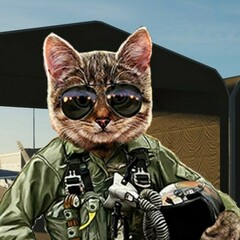






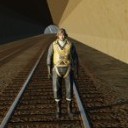
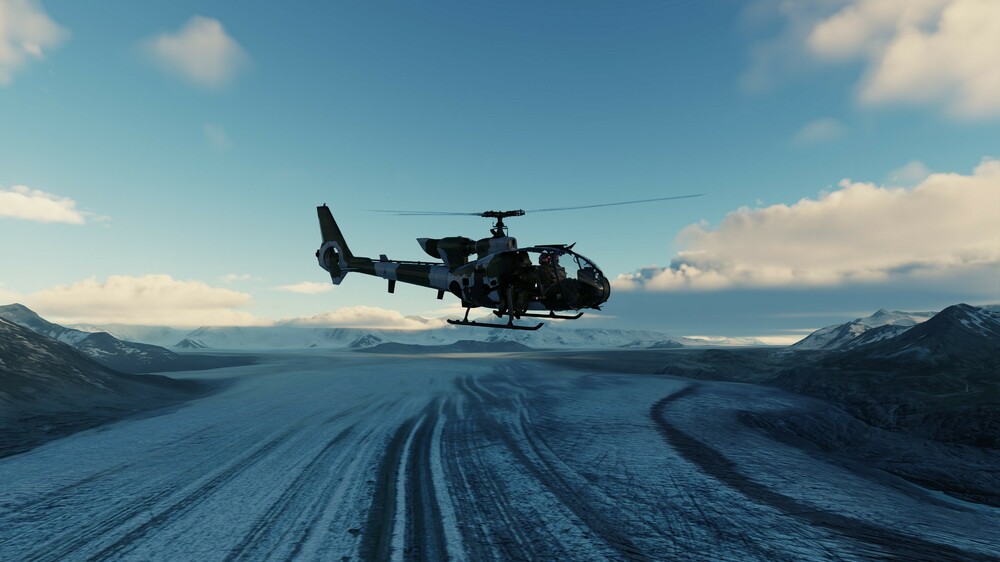
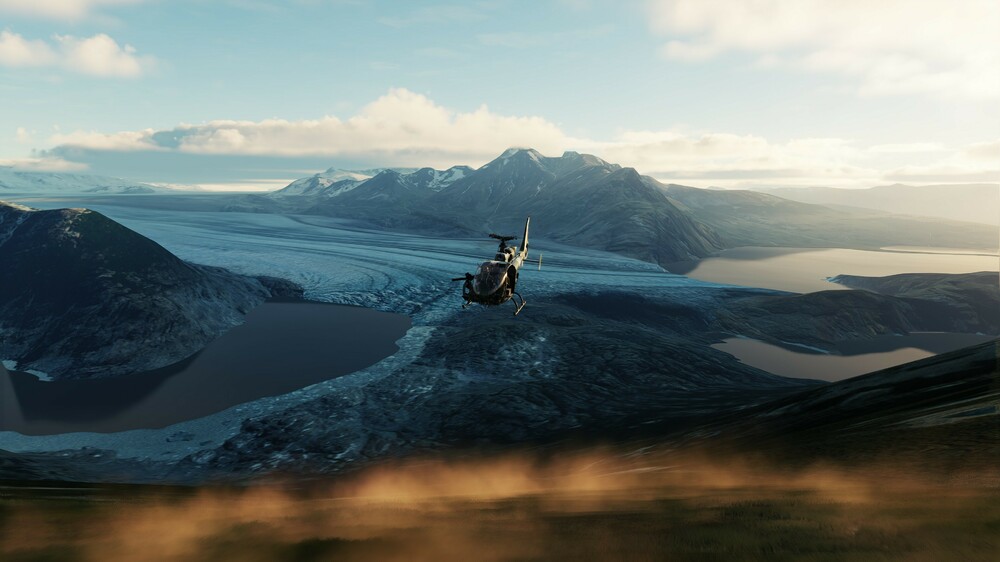
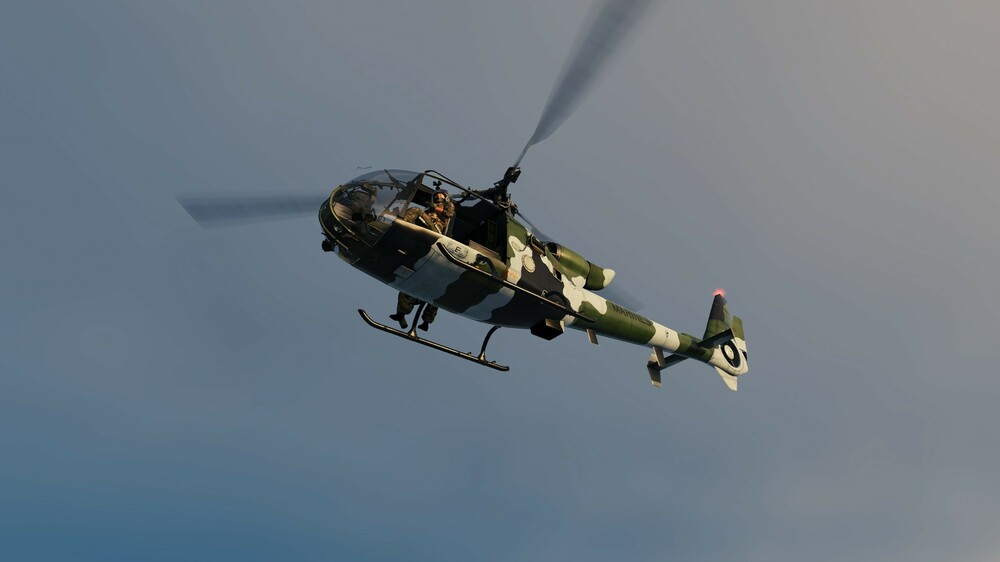
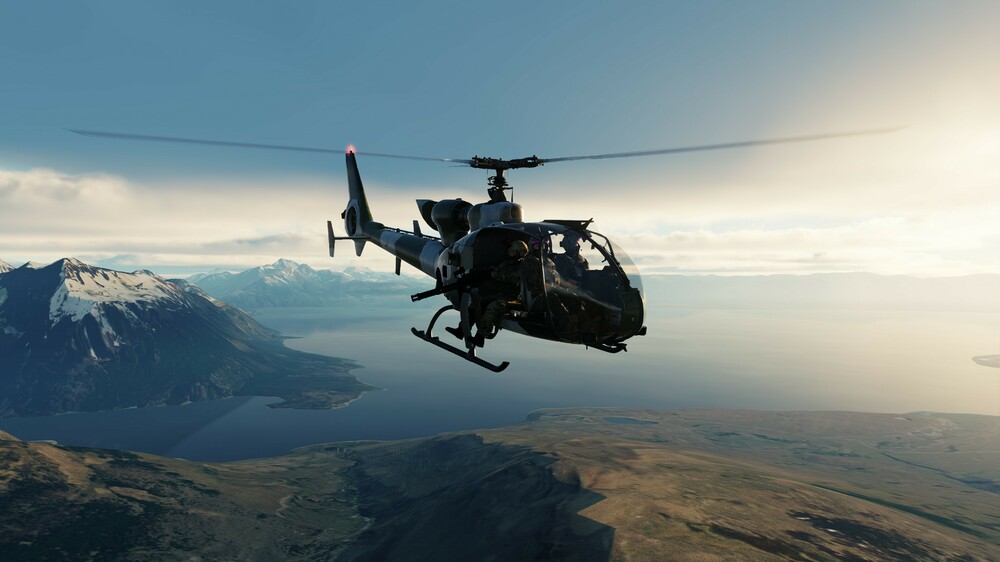
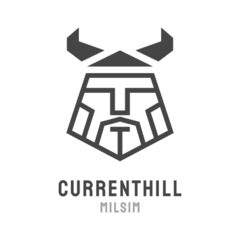
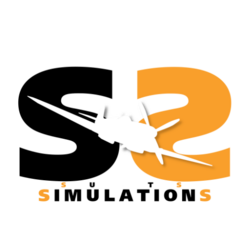


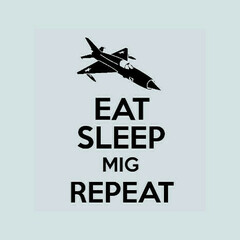


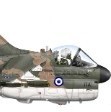
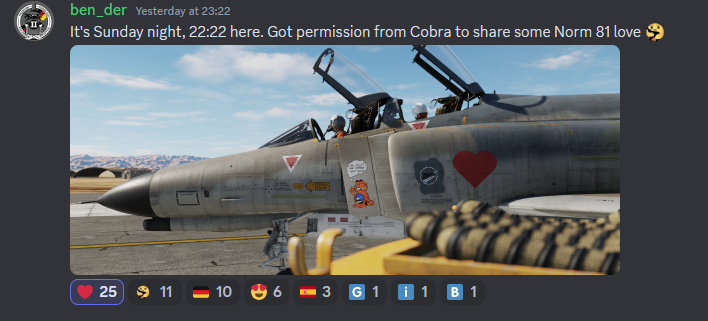
.thumb.jpg.2eb0373f0189c4b76f933c0e355fb455.jpg)
